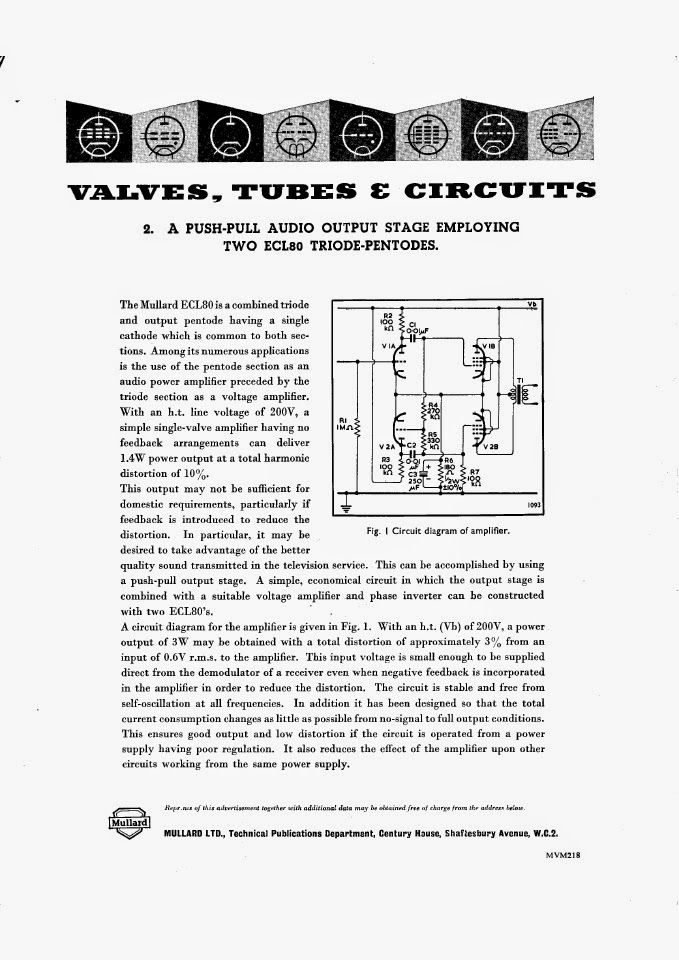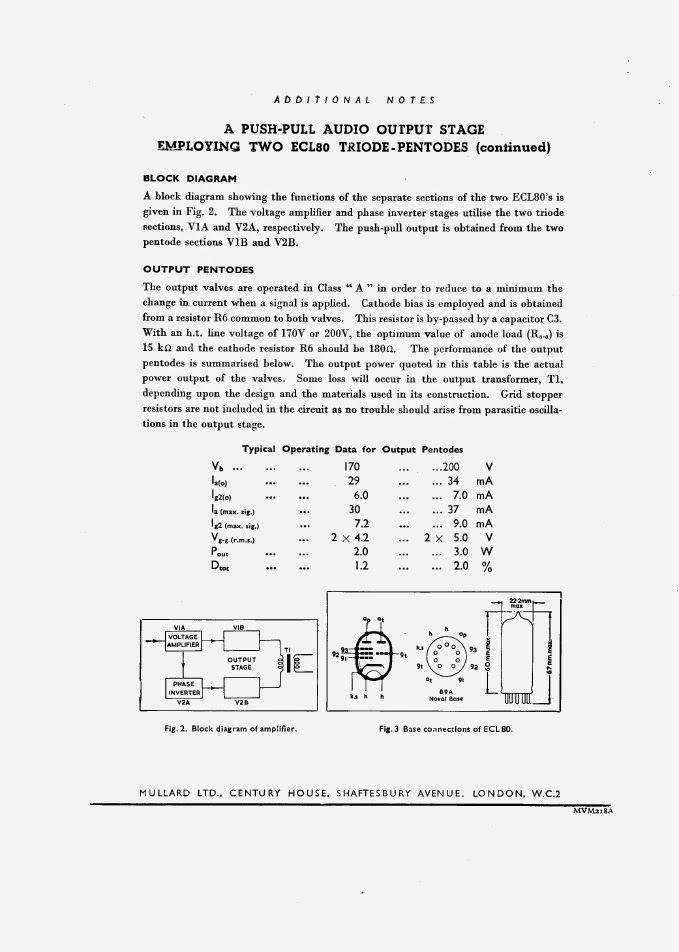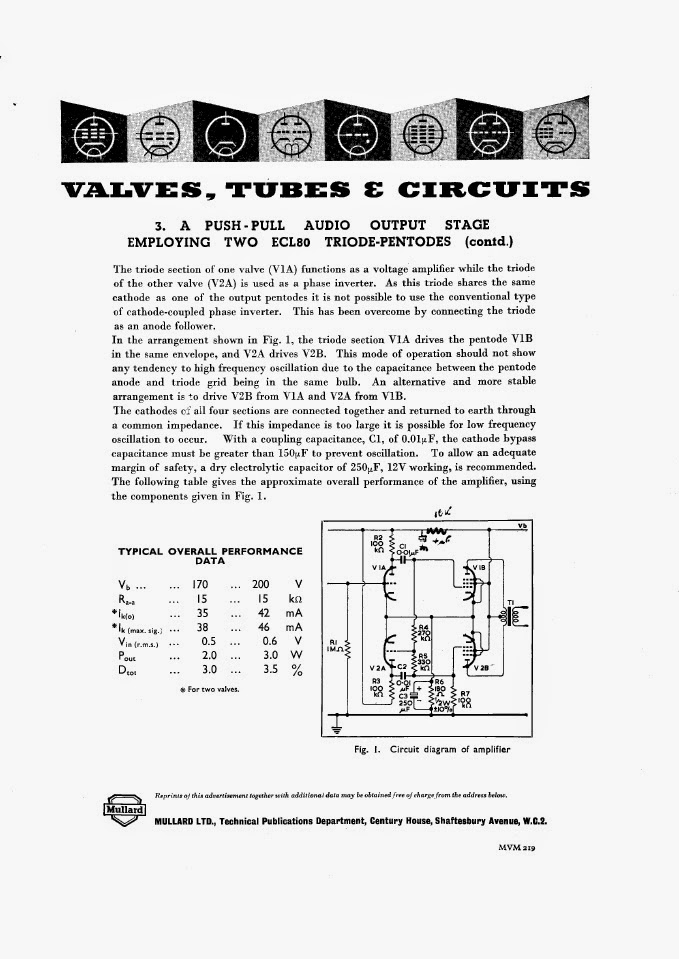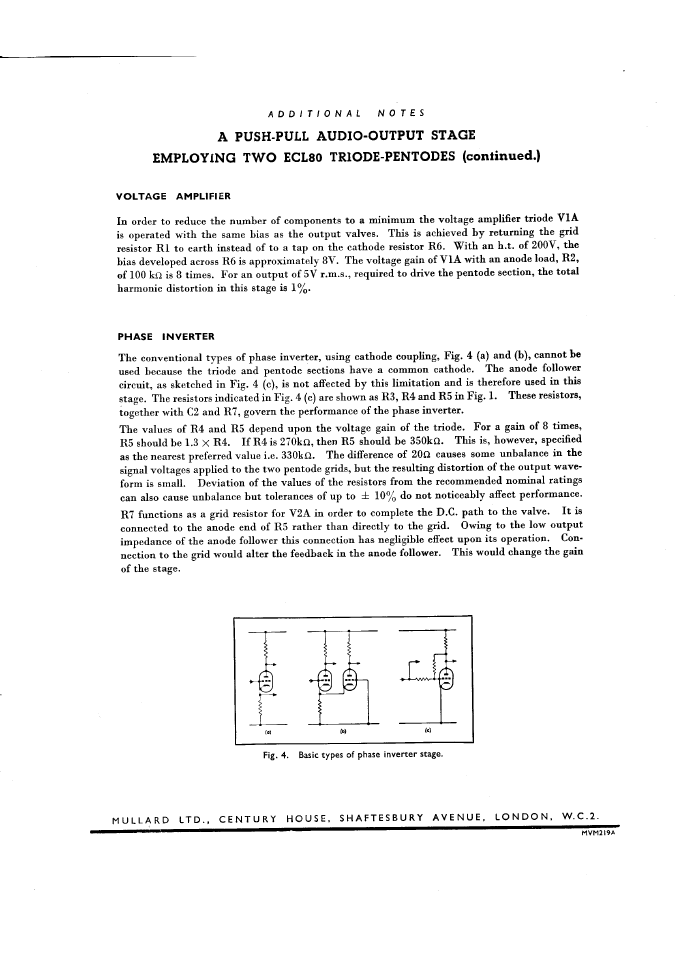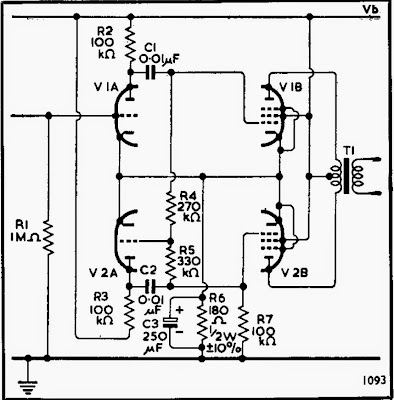Here I present a push-pull amplifier circuit that uses two ECL80 tubes and is quite simple to build. It’s an interesting amplifier because it uses ECL80 tubes, which are inexpensive and have low filament current consumption. Therefore, this amplifier can be built and used, for example, as an amplifier for a computer.
It requires a 200V power supply, and with an input voltage of 0.6V RMS, it delivers an output of 3W RMS to the speake with approximately 3% distortion. The output transformer must have a primary impedance of 15kΩ plate-to-plate, and the total quiescent current consumption is 42mA.
A logarithmic potentiometer can be added at the input to act as a volume control; a value of 500kΩ would be sufficient for this circuit. Also, if more gain is needed to connect a device delivering a lower audio level, a preamplifier stage can be added using a triode from an ECC81/ECC82/ECC83 tube, depending on the desired gain.
The power supply therefore needs to provide 200V at 42mA for the circuit supply and 6.3V at 600mA for the filaments of the two tubes. If a stereo version is made, the requirements double, meaning it should supply 200V at 84mA and 6.3V at 1.2A.
An economical way to obtain these voltages is to use a 230V/6V transformer for the filaments (or 230V/12V if the filaments are connected in series) and two small transformers with 230V primaries and secondaries of the same voltage connected back-to-back (for example, two 230V/6V transformers where the primary of one is connected to the mains, the two secondaries are joined, and the other primary provides isolated 230V). From there, the voltage is rectified using a diode bridge and filtered with a pi filter to obtain the desired 200V output.
Here are the pages with the exact details of the assembly and design of this small amplifier:
